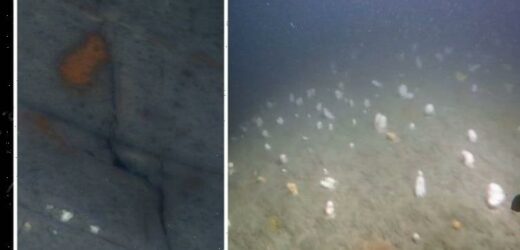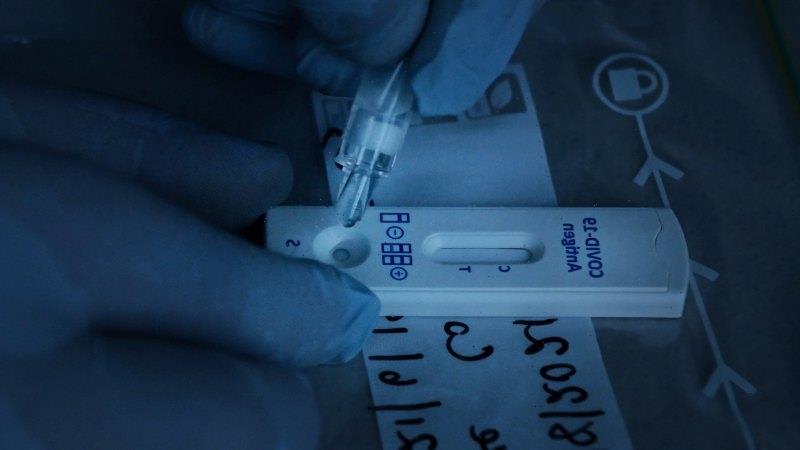HMS Mary: Divers discover 18th century cannon in shipwreck
We use your sign-up to provide content in ways you’ve consented to and to improve our understanding of you. This may include adverts from us and 3rd parties based on our understanding. You can unsubscribe at any time. More info
Lost in the depths of our oceans are some three million shipwrecks, each one hiding stories of adventure, innovation and tragedy in some cases. Just six miles off the coast of Sweden, in the North Sea, lies a wreck that threatens hundreds of miles of spectacular Scandinavian coastline. The Skytteren sank 80 years ago and was considered Sweden’s most dangerous shipwreck.
She was explored by National Geographic’s documentary series ‘Ocean Wreck Investigations’.
Four years ago, the Swedish Navy carried out an investigation on the wreck, using divers and more traditional techniques such as video filming.
However, due to the low visibility, filming is largely ineffective. Ingemar Lundgren, a shipwreck surveyor, headed to the wreck site in the summer of 2020 with a different approach.
Mr Lundgren and his team used an underwater robot to take almost 27,000 overlapping photographs, which were stitched together electronically to get a better idea of the condition of the Skytteren.


The Skytteren formed part of Norway’s commercial fleet at the beginning of World War 2. When Germany took control of the Baltics, a secret plan was hatched for 10 ships, including the Skytteren, to escape and head towards Britain in a move known as Operation Performance.
Late into the night of March 31 1942, the Skytteren and its nine sister ships departed for Britain.
Of the 10, two made it to British waters, six were sunk by the Germans or scuttled by their crew, one of which was the Skytteren, while two turned back to Gothenburg port.
Lying 243 feet (74 metres) beneath the surface, she still held more than 170 tonnes of oil in her tanks. Obstacles on the wreck such as fishing nets, cranes sticking out and pieces of wreckage made the photogrammetry process exceptionally difficult.

Mr Lundgren said he had worked with “hundreds” of shipwrecks, but the Skytteren is the “absolute worst”.
He added: “It’s a ticking bomb this wreck.”
In the 80 years since she sank, Skytteren’s hull plates had eroded from 0.6 inches thick to just 0.2 inches. This is all that separated the oil from the ocean.
Worse still, at least one crack had formed.
DON’T MISS:
Archaeologists unearthed ‘unique’ ancient stone ‘eye idols’ in Petra [INSIGHT]
Science breakthrough as satellite discovers ‘deformed’ planet [REVEALED]
Archaeologists stunned by ‘mystical’ UK cave filled with human bones [INSIGHT]

Mr Lundgren warned: “It’s not a matter of if, it’s a matter of when she’s going to start to leak oil. It’s not going to end well.”
Dr Fredrik Lindreg, a senior adviser at the Swedish Agency for Marine and Water Management, said an oil salvage operation should be prioritised very quickly.
His agency previously successfully retrieved over 13,000 gallons of diesel and more than 19,000 gallons of heavy fuel from a different wreck off the Swedish coast.
That ship, however, sank in 2006.

The Skytteren sank in 1942, so it had deteriorated a lot, lot more.
Mr Lundgren’s imaging provides new information as to where they can and cannot drill into the wreck.
Reports in the Swedish press last year, shortly before the documentary aired, said work had begun on removing the oil from the ship. It is unclear whether or not all the oil was removed.
Mr Lundgren’s research had revealed the state of the oil-laden beast.
He told the documentary: “We have found a lot of evidence that the hull is in much worse condition than we expected.
“The hull side is severely attacked by corrosion.”
He said the hull is a “massive mess” with “giant cornflakes of corrosion”.
An oil spill simulation predicted the unique ecosystems of the Scandinavian coastline would have been devastated by a 110,000 gallon oil slick.
Source: Read Full Article

